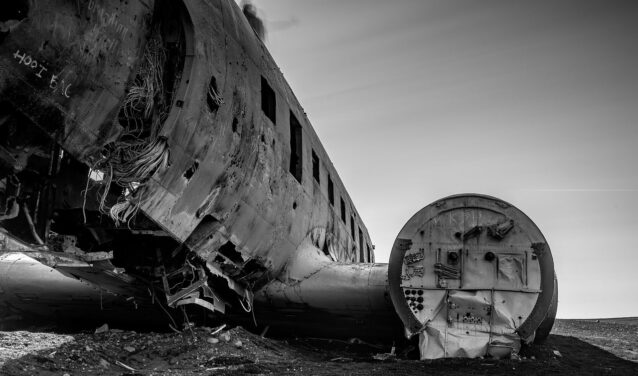Did you know that the lifespan of a private jet is 50 years? As many as 200 commercial aircraft are retired every year. And it is estimated that by 2030, more than 20,000 private jets will have to be recycled worldwide. But then the question arises, how do you recycle a private jet? Who does the dismantling? What happens to the parts? How much does it cost to recycle a private jet?
These are just some of the questions that AEROAFFAIRES answers in this article on private jet recycling.
Aircraft recycling: some figures
Did you know that :
- 92 % of an aircraft is recyclable.
- 10 % of an aircraft is transformed into precious metals (titanium, steel, aluminium)
- A recycled, “second-hand” aircraft engine can cost up to 3 million euros.
- one recycling can represent 1,000 parts put back into circulation.
- only 13 % of the aircraft parts are non-reusable waste.
- It is estimated that up to 5,000 cans can be made from a large long-haul aircraft.
Recycling a private jet : the different steps
About 90% of the aircraft will be recycled. So what are the steps involved in recycling an aircraft? This is what we will explain to you now.
The first step is to transfer the aircraft to the dismantling site : either in Tarbes or in Châteauroux.
Then, experts remove the engine, the aircraft’s key part which has a high added value.
hen comes the operation of “greening the appliance“. This is the dismantling and cutting up of the appliance.
At this stage, experts empty the appliance of its fluids and completely strip it of its components. All the components of the aircraft are removed: seats, cockpit, instruments, windows, carpeting.
The aircraft is also completely emptied of its “liquids”: oils, petrol, hydraulic and electrical systems.
The elements related to hazardous materials are entrusted to companies that have the necessary expertise to ensure the treatment of these materials.
It takes a minimum of 6 weeks of work to cut up the appliance, which is the last stage, and more than 3 months to carry out the complete recycling of the appliance.
Who recycles private jets ?
Airports and companies that host the dismantling of aircraft :
Two airports are well known in the world of private jet and aircraft recycling in general. They host aircraft dismantling and recycling operations. These are Tarbes airport and Châteauroux airport.
The leading company in this aircraft recycling market is Tarmac Aerosave. It is a subsidiary of Airbus, Safran and Suez. This company stores 20% of the European aircraft that are mobilised, as they are at the end of their life, while the recycling takes place.
The start-up AC Dismantling : a new player in the private jet recycling market.
Anthony Chamarty is behind this innovative project that is completely in tune with the times. His objective? To provide a solution for airlines to get rid of their private jets that are no longer in service and to offer recycling and sometimes a second life to the aircraft’s spare parts: seats, galleys, materials, cockpits, engines. This ambitious company wants to become the “junkyard” of private jets.
How much does it cost to recycle a private jet ?
The price is estimated at 150,000€, in Europe. This high cost is justified by the cost of skilled labour. It is the storage of decommissioned aircraft that is most profitable for recycling companies.
How much does recycling a private jet pay ?
It is estimated that an aircraft that has undergone a dismantling operation has an estimated value of 10% of its new purchase price.
The price varies according to the prices of raw and secondary materials.
What happens to private jet parts after recycling ?
Many parts will get a second life. The recycled parts are :
- cables
- plastic parts
- the engine
- fuselage, tailplanes, wings and engines
- Spare parts: windows, slides, safety doors, flight controls, black boxes, on-board computers.
- parts with dangerous materials: batteries, asbestos, fire extinguishers
The world of interior decoration is very interested in portholes. A large proportion of the plastic parts will be used in the textile industry.
Aircraft recycling: an unregulated market
Today, the aircraft recycling market, although booming, has difficulty in being regulated. Thus, we sometimes see local scrap dealers dismantling an aircraft at the end of the runway using unspecified and non-selective methods. No sorting or recycling is done. That is an “aircraft scrapyard” operation, like what can be found in the world of cars.
That is why AFRA, the international recycling association, is working to regulate the sector by defining a code of good conduct. This will ensure the proper verification of second-hand parts and the traceability of the parts put back into circulation. This regularisation of the activity is also intended to ensure that the environment is taken into account.
Aircraft recycling is a long and costly process but necessary for the environment. Sorting and giving a second life to the parts of an aircraft, whether commercial or private, are essential steps in meeting environmental challenges. This sector should evolve in the coming years to become an essential and integrated step in the life cycle of an aircraft.






